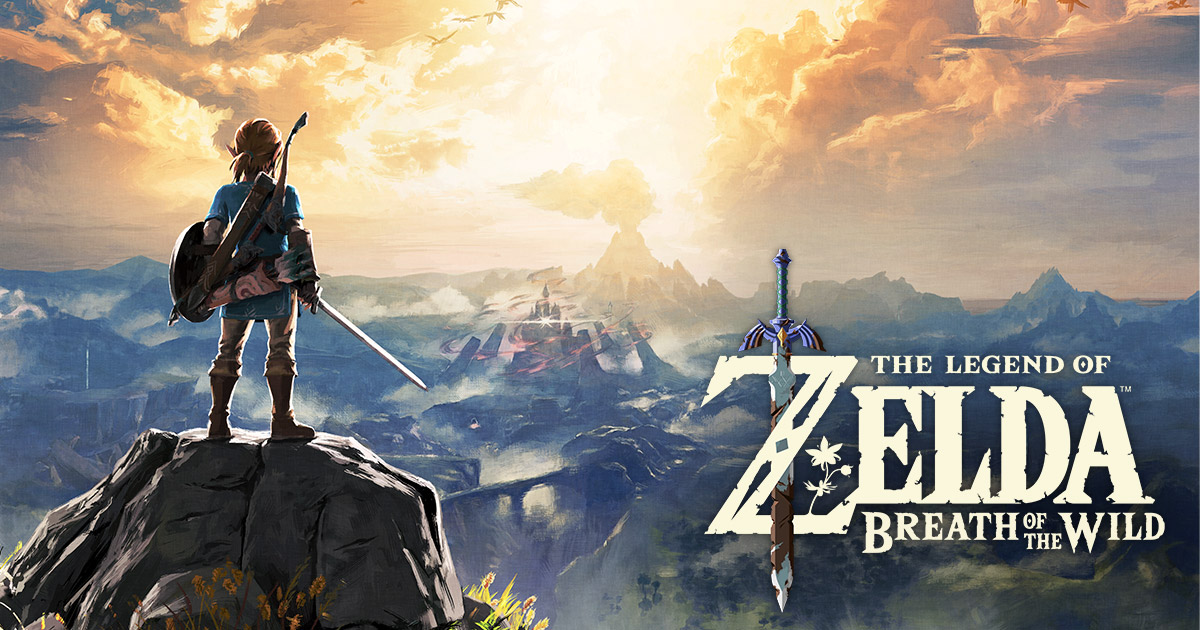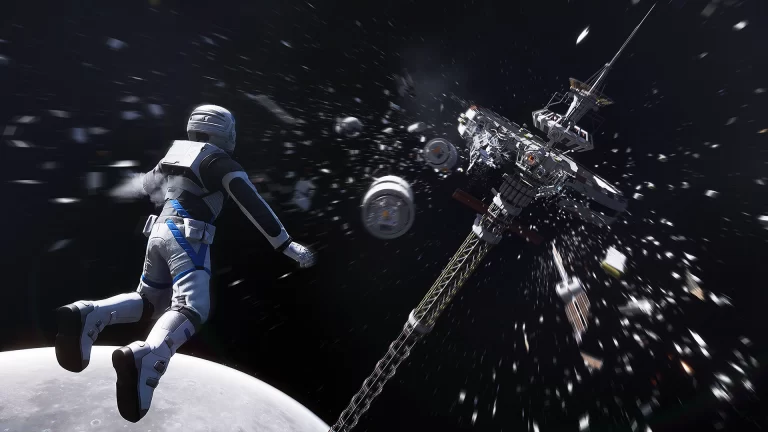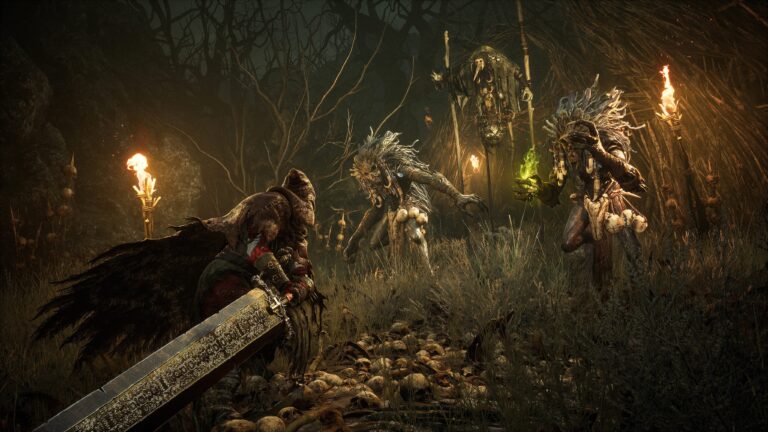The Legend of Zelda: Breath of the Wild took the world by storm when it launched with the Switch in 2017. Breaking away from the traditional linear, dungeon-hopping adventure, Breath of the Wild gave players unparalleled freedom and verticality for a Zelda game. Many have since touted Breath of the Wild as one of the best Zelda games in the franchise’s history.
In all honesty, they can’t be blamed for thinking that. Breath of the Wild looks great, plays fantastically, and gives players so many different approaches to its gameplay. There’s plenty of good reasons why many fans are highly anticipating the sequel, which has not been given an official title yet.
Still, despite being a stellar game, Breath of the Wild has some areas that could be improved upon to deliver an even more outstanding sequel to the masterpiece that was the original. Here are five changes and features we would like to see in Breath of the Wild 2.
1. Better Weapon Management System
Many players can attest that the weapon durability system in Breath of the Wild could be anything from somewhat irritating to downright aggravating at times. Players often came across a weapon they really liked, only for it to break on them after several skirmishes. Though this was less the case during the latter half of the game, the weapons frequently breaking in the first half had the potential to be a death sentence for poor Link.
The reason this durability system exists in the first place is rather simple: it teaches players to be mindful of their actions when approaching any given scenario. Mindlessly bashing a sword against a strong foe reinforces no good habits and the durability system is a most excellent teacher in that regard. The Legend of Zelda always had a strong puzzle-solving presence throughout its games, especially combat. No boss fight was ever won swinging a sword with reckless abandon.
Since Breath of the Wild ditches the usual Zelda fare of linear puzzle dungeons and combat, player consequences had to be redistributed somewhere else. Weapon uses in Breath of the Wild are the amount of tries a player gets before having to fall back and reevaluate their situation when something isn’t working in their favor. It reinforces on-the-fly thinking and resource management, teaching players to be mindful when fighting.
The system in Breath of the Wild is frustrating but it’s a valuable teacher. However, every teacher can brush up their lessons now and then. The sequel should opt for a more precise and informative weapon management system. It should add visual indicators in the form of gauges or tallies for weapons – all seen in the inventory screen – and also allow players to drop items via the weapon scroll screen.
A visual gauge would allow players to be more aware of the durability of their equipment, providing them opportunities to strategize before and during engagements. It will also let them time when to toss a weapon, take advantage of its break damage on an enemy, or both. After all, Breath of the Wild only alerted a player when a weapon is heavily damaged, when it could be so much more detailed and helpful.
Allowing players to drop weapons via the weapon scroll instead of the pause menu would let them stay in the flow of combat instead of having to wade through pages of items and other gear. It would also make dropping and picking up weapons with a full inventory way faster than it is currently. It’s strange how a game that revolves around constantly shifting and dropping gear doesn’t have a quicker way to dispose of them.
2. Frame Rate Issues
The Switch continues to fight an uphill battle against its competitors with regards to visual fidelity and quality. The Switch wasn’t a powerful console when it released and pales in comparison to the sheer power that next-gen systems like the Xbox Series X and PlayStation 5 are able to muster.
Still, that doesn’t mean that it’s impossible to make games look fantastic on weaker hardware. Studios like Naughty Dog and Sucker Punch delivered visually amazing games that look fantastic on even the base PS4. It goes to show that a studio can master their use of hardware and make it deliver a fully optimized experience with enough time and work put into it.
In general, Breath of the Wild looks great and plays well on the Switch, but there are many instances when the game drops in frame rate, hiccups, or lags on a player. Though it may be a minor annoyance when nothing important is happening on screen, it can cause a non-player misstep and be immersion breaking when the player is in the middle of combat. Not unlike other Switch games, these issues normally occur in areas with dense foliage, particle effects, and entities.
With several years of experience under its belt, the sequel’s development team can take all of the lessons it learned from its first experience with the Switch and create a far more optimal experience. Given the rumors of the Switch Pro floating around, it may well become the most visually impressive Zelda game to date.
3. Multiple Save Files
Zelda games never truly had an autosave function before Breath of the Wild, as saving progression was totally dependent on a player’s judgment and common sense. The game’s autosave function was an anti-frustration measure to ensure that little progress is lost should a player happen to suffer an unfortunate fate. For new and early game players who saw the game over screen often, this was a godsend and a good reminder to save vigilantly.
What Breath of the Wild’s save feature skimps out on are multiple save files. Almost every single past Zelda title let players have multiple save files on hand. It allowed players to hold onto crucial game moments they wanted to replay via save or a 100% completed game file to mess around with in the future.
Breath of the Wild offers a bunch of autosaves but only one measly personal save file. Players can’t start a new adventure without saving over their current progress nor can they keep a save of a memorable moment they want to revisit, all the more shameful given that Breath of the Wild is chock full of them.
At present, the only way to bypass the save file limitation is to create an entirely new profile on one’s Switch, which in itself isn’t a big hassle. However, this creates a completely new game profile that carries over none of the progress a player may have on their original file, preventing them from replaying favorite parts of the game without beating the game up to that point.
The Breath of the Wild sequel should go back to the olden days of simply providing players with multiple save files from the start. If nothing else, it would be less of a hassle and far more convenient than the current arrangement.
4. Glamor Gear System
The amount of outfit options and customization in Breath of the Wild was breathtaking, with Link able to look like a knight, a ninja, or even something more eyebrow raising. It lets players play out various types of fantasies, builds, and strategies that no previous Zelda title could provide. Never before could the player face the Demon King Ganon himself as Link stands proud wearing nothing but his boxers.
However, with the way outfit gear operated in Breath of the Wild, every single piece of clothing was tied to a defensive statistic or passive bonus inherent to the clothing in question. Players may want to look fabulous at all times, but if that comes at a hefty cost to their defenses, it may persuade them otherwise. Breath of the Wild gives players so many options yet forces them to select the most optimal gear because of the game’s nature.
To alleviate this predicament, the sequel should come with a “glamor gear” system akin to how Final Fantasy XIV handles its clothing items and gear. Using an item or other in-game feature, players would be able to don any outfit in their inventory without the cost of lost stats to do so. This feature would be a wholly cosmetic change to retain game balance, but it would still let players deck themselves out however they wish without hampering their overall experience.
5. Controller Re-mapping
Anyone who owns multiple consoles knows the initial discomfort of easing back into using a given controller after playing with another console’s control scheme for a while. Muscle memory is a huge part of gaming and can often lead to frustrating or hilarious mistakes when playing.
Many modern games give players the freedom to change up their control scheme so as to better cater to their style. For big open-world adventures that involve a lot of gear, knowing where the buttons are and what they do are crucial to success. Optimizing controller layouts to better fit one’s playstyle often leads to the best play experience possible.
Breath of the Wild, for all its steps in the right direction, stumbles here. All command inputs are locked in and cannot be changed at all, which is ironic given the level of customization that the game provides on every other front. Players must play Breath of the Wild’s way – no exceptions.
With enough practice and muscle repetition, players will get the hang of almost any game but it can be a real hassle. I can’t count how many times I crouched when I meant to run or jumped off my horse by accident because of how entrenched I was with a different control scheme.
Having this feature in the sequel will do nothing but give more power to the players, which in turn should boost their enjoyment of the game.
Breath of the Wild’s sequel is still a long ways out, with near radio silence from Nintendo since its 2019 reveal. Leaks have been pointing towards a 2021 reveal or release, but nothing has been set in stone yet. Until that day comes, here’s hoping that this next game will be even better than its predecessor.
No related posts.






